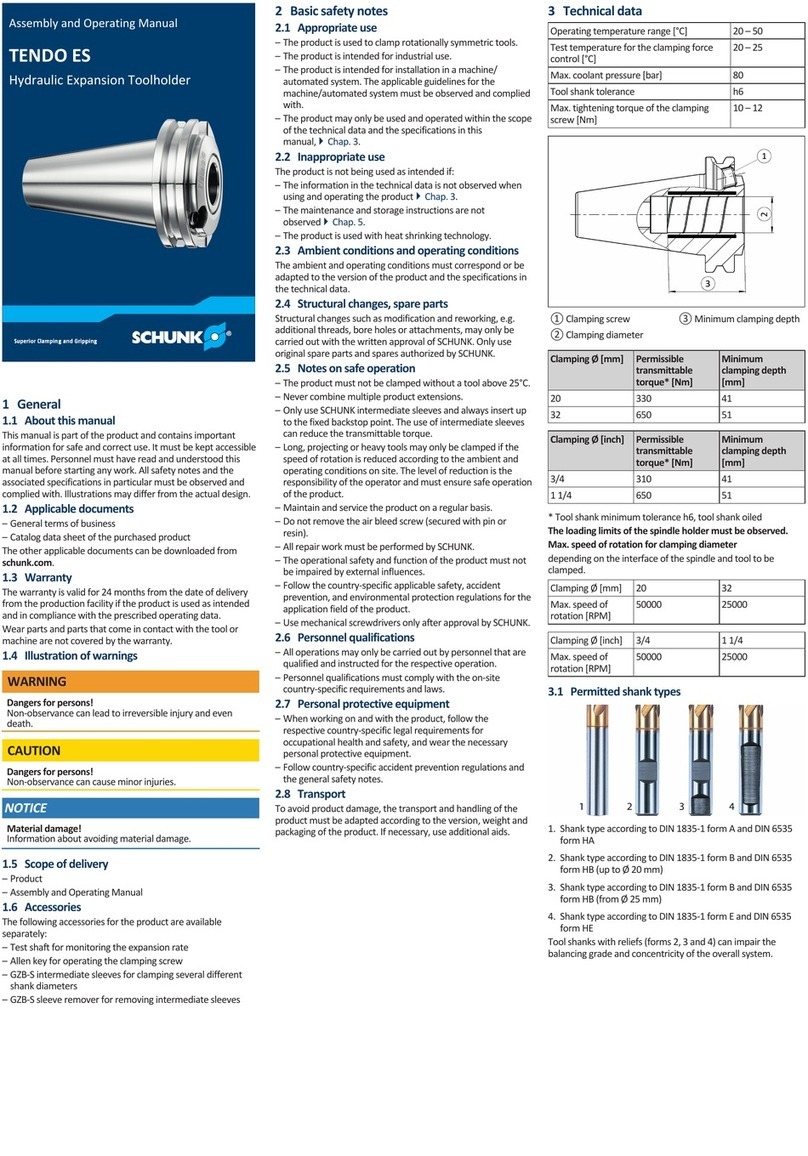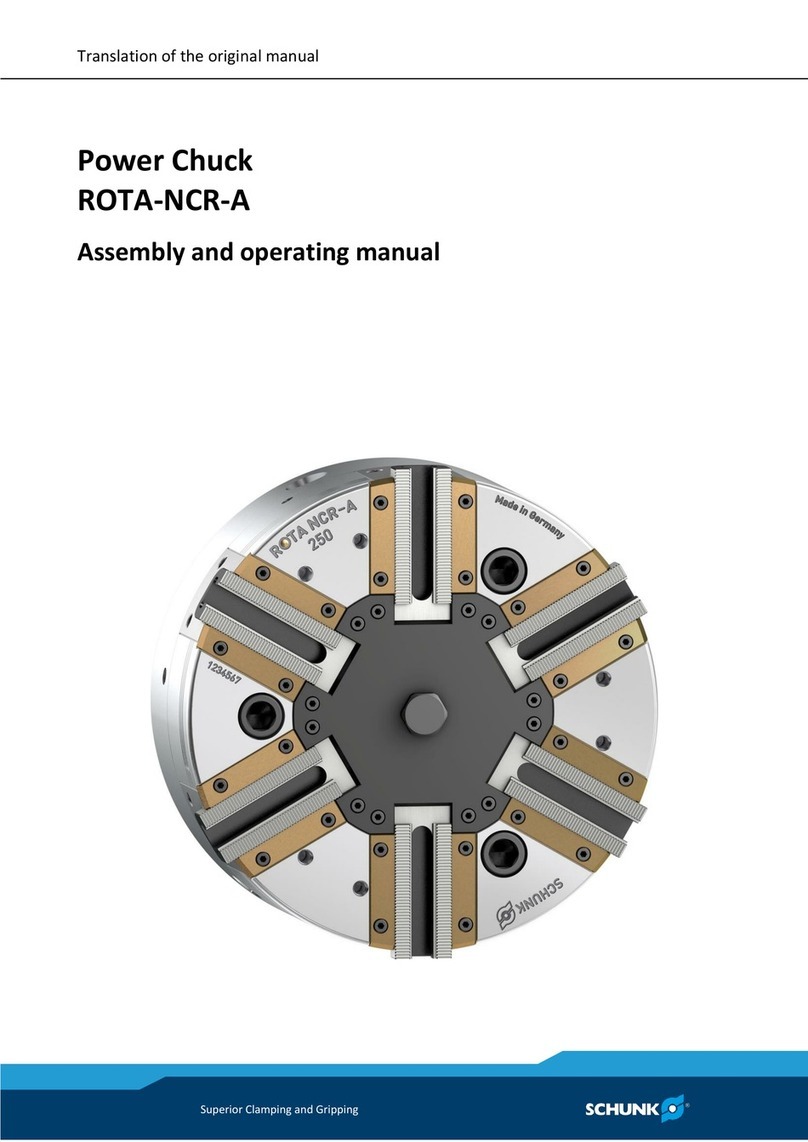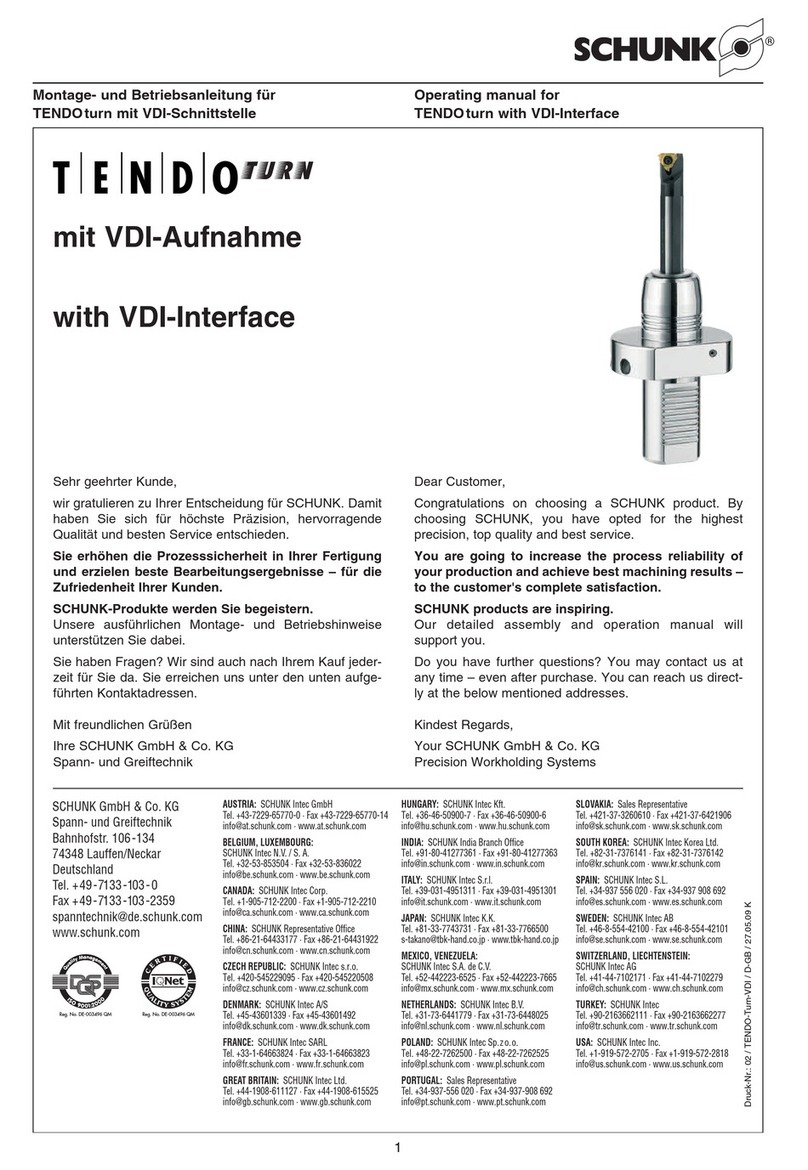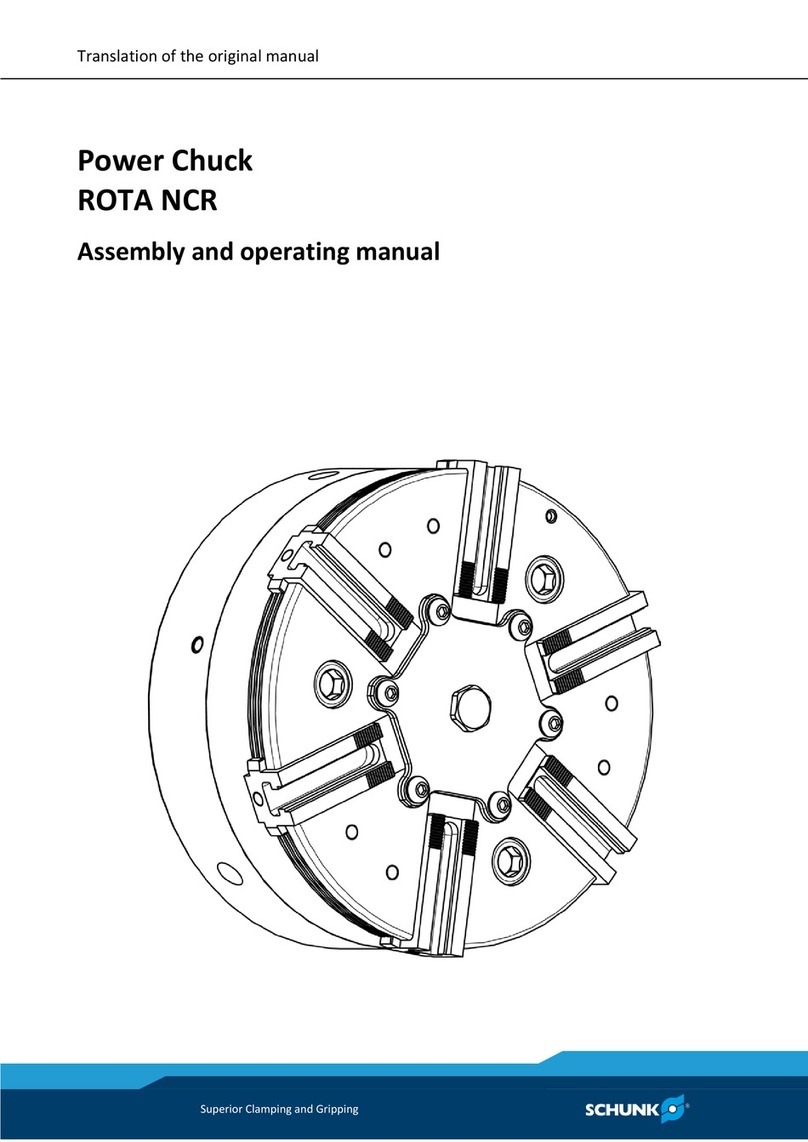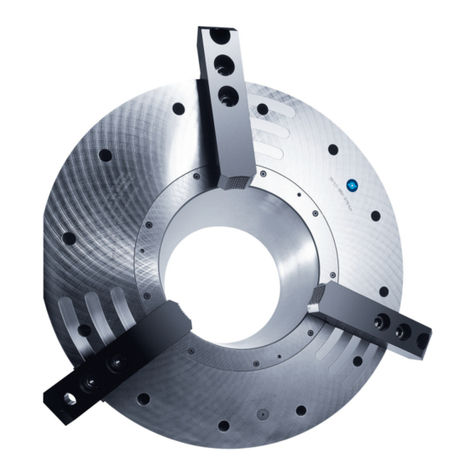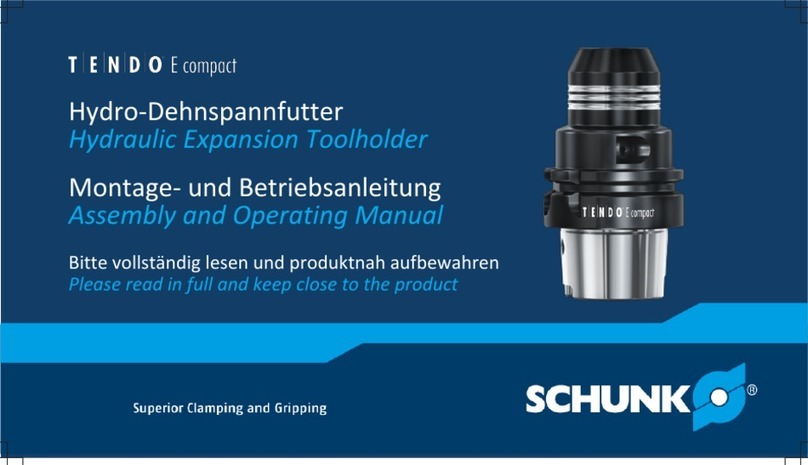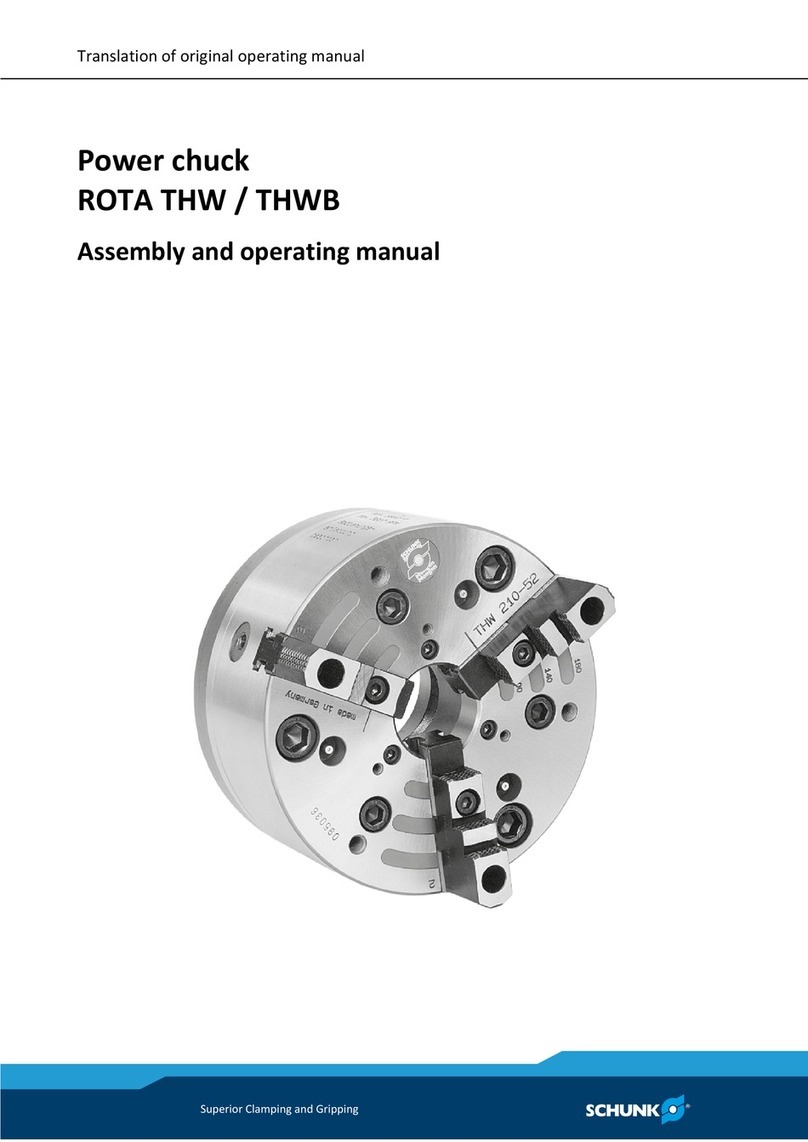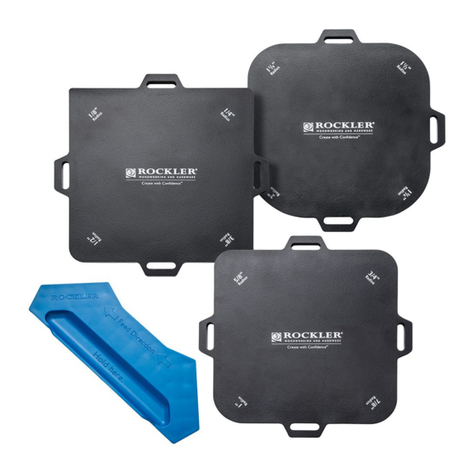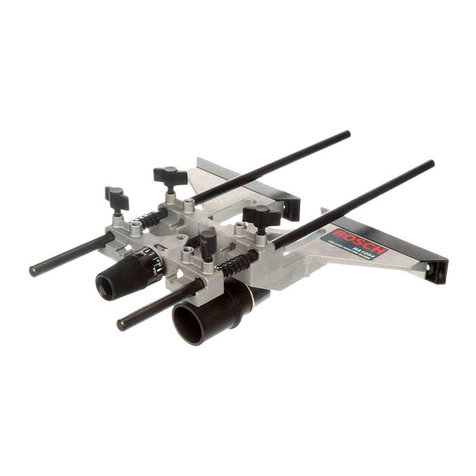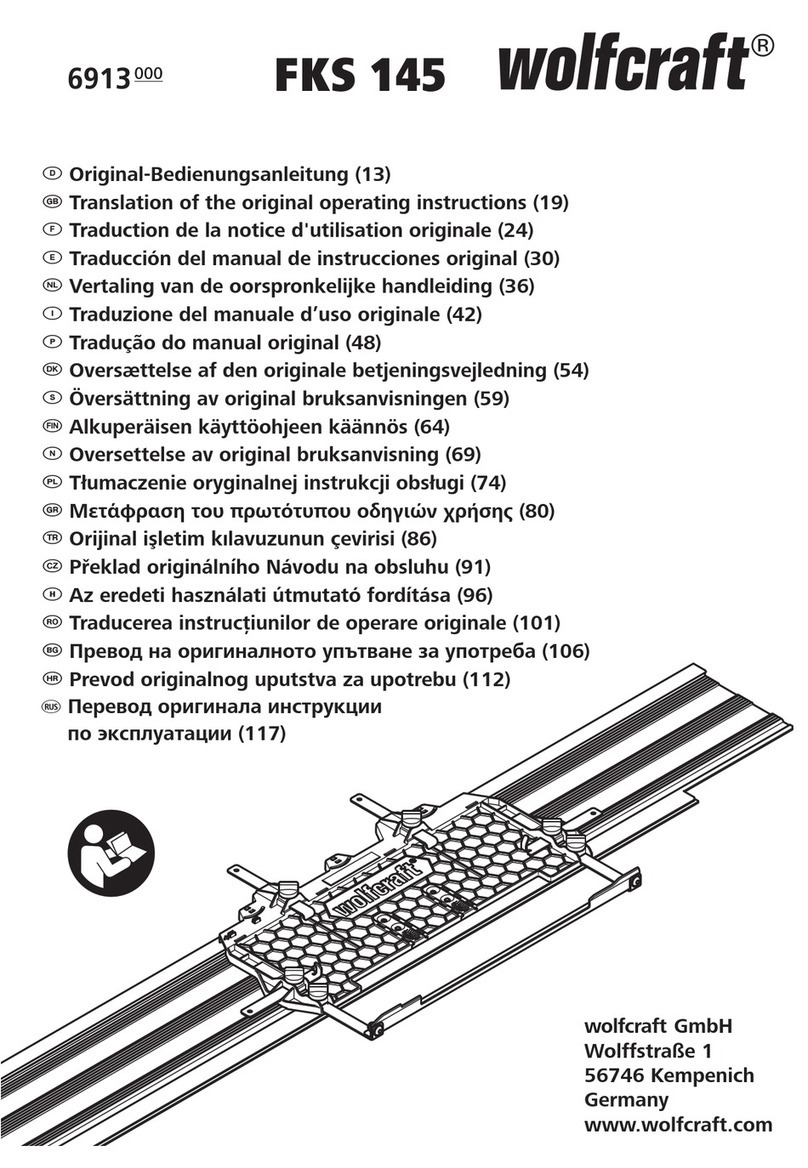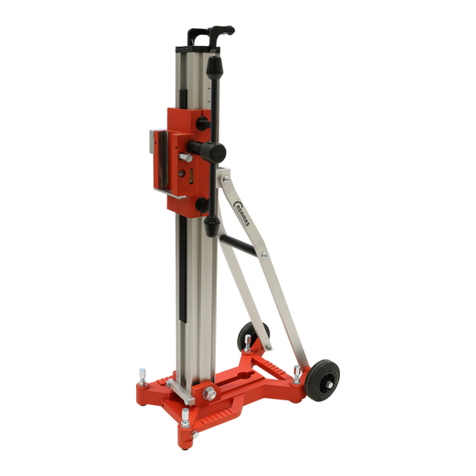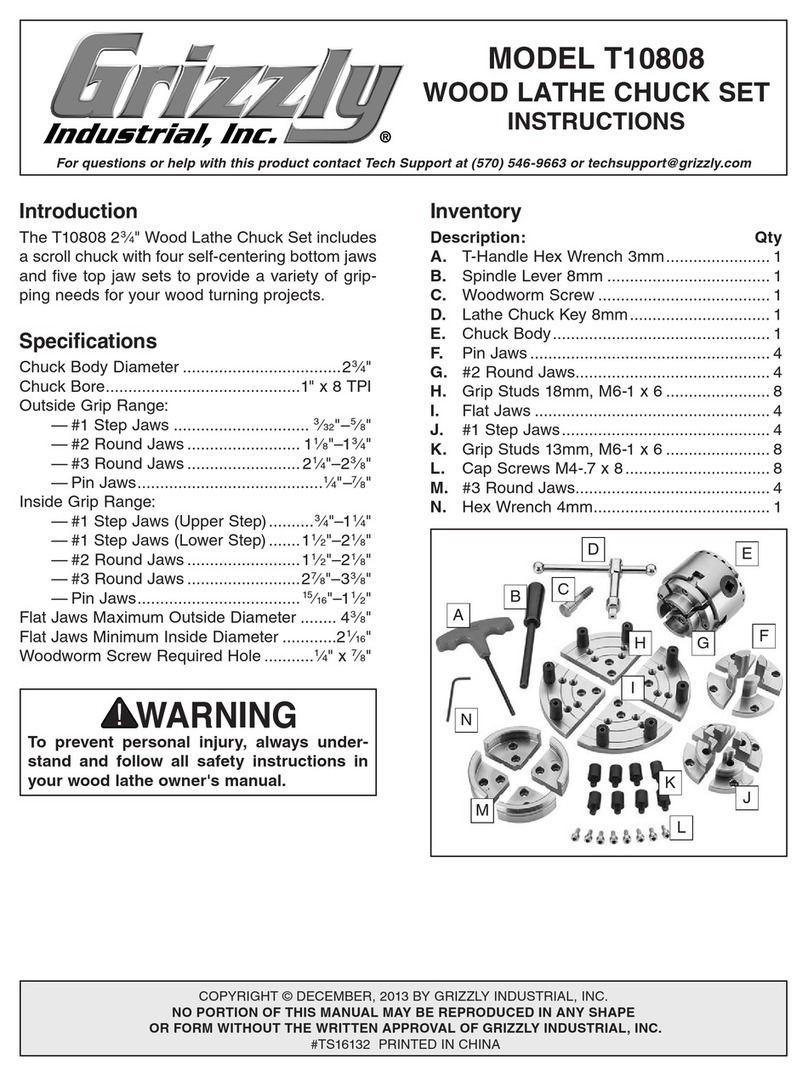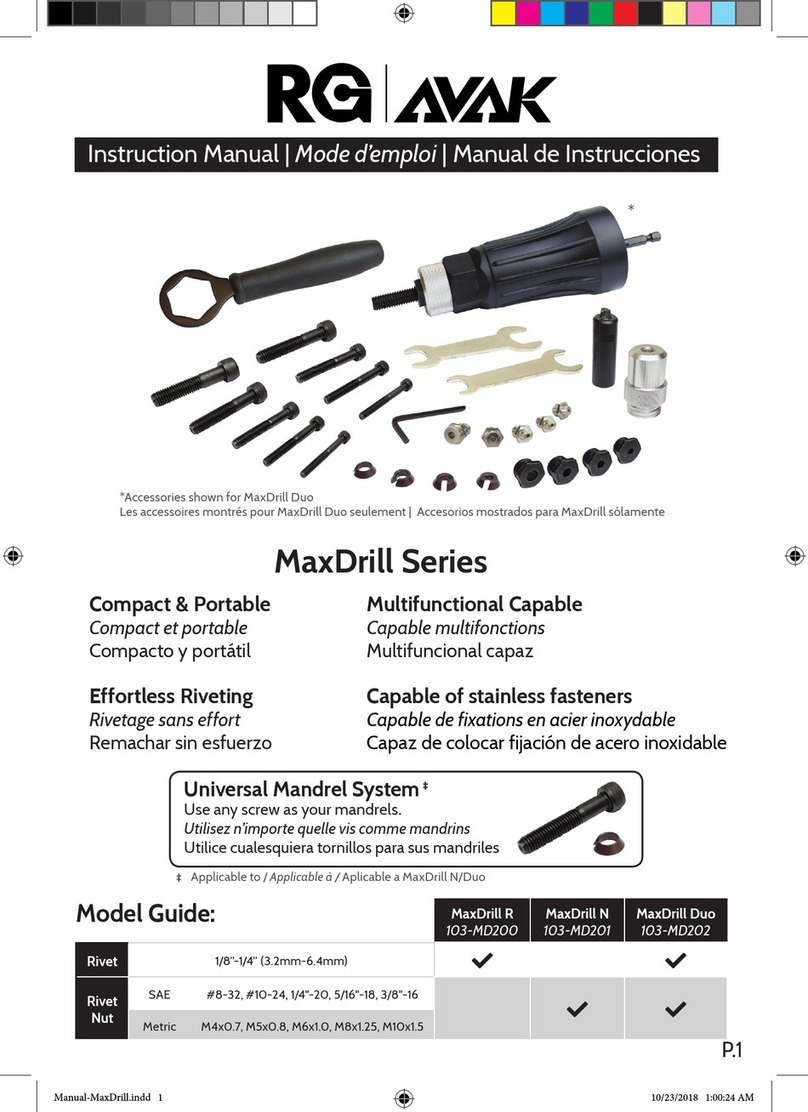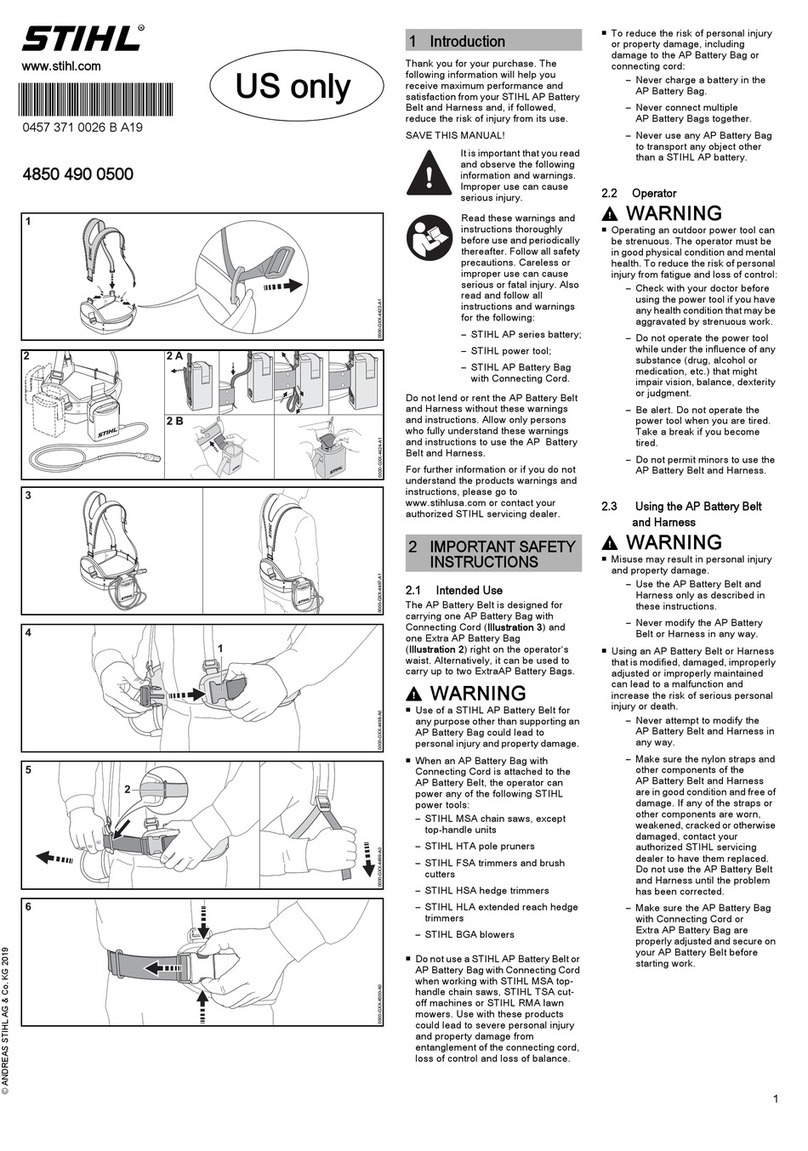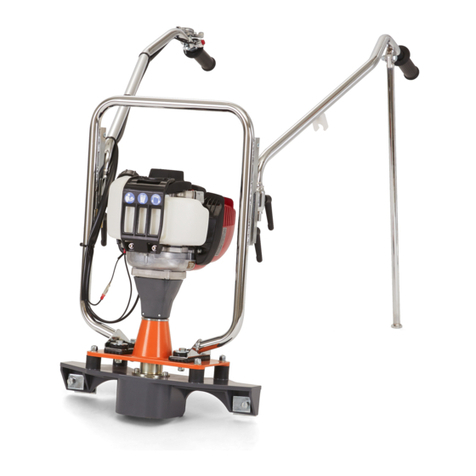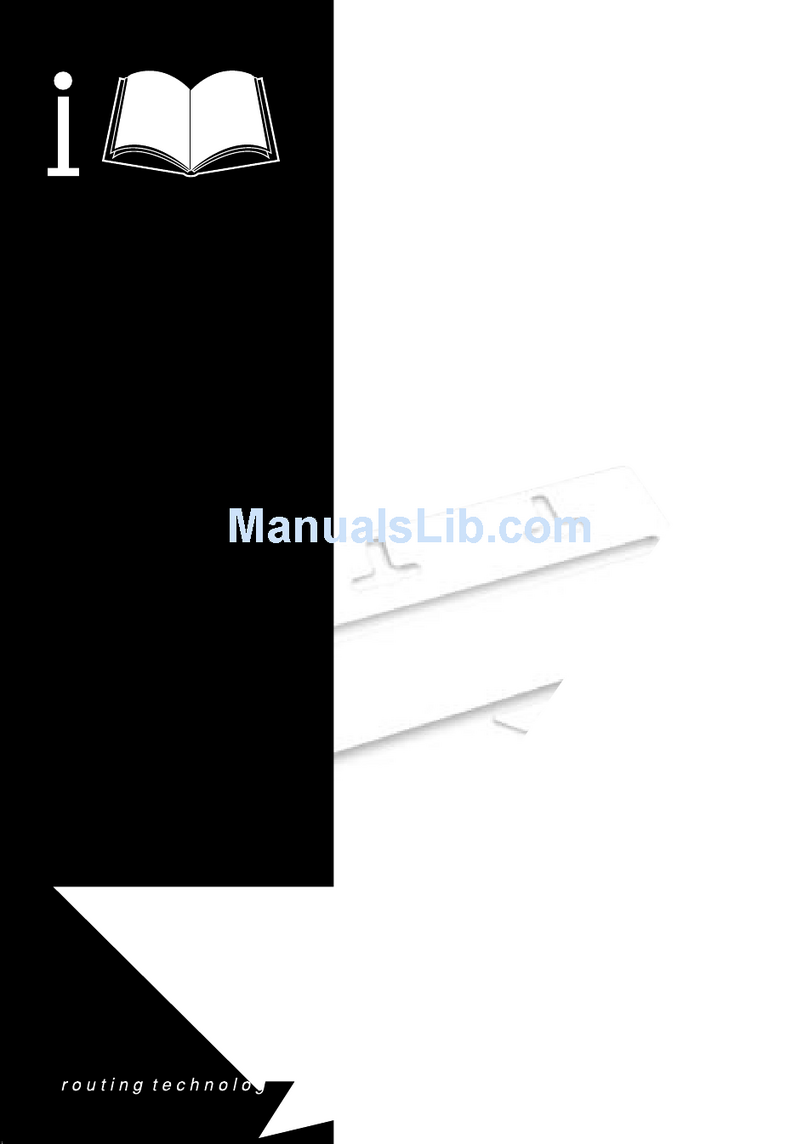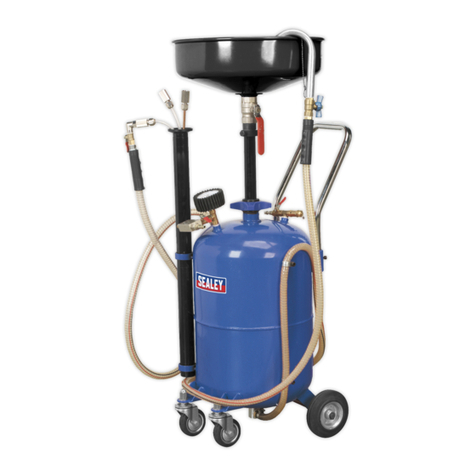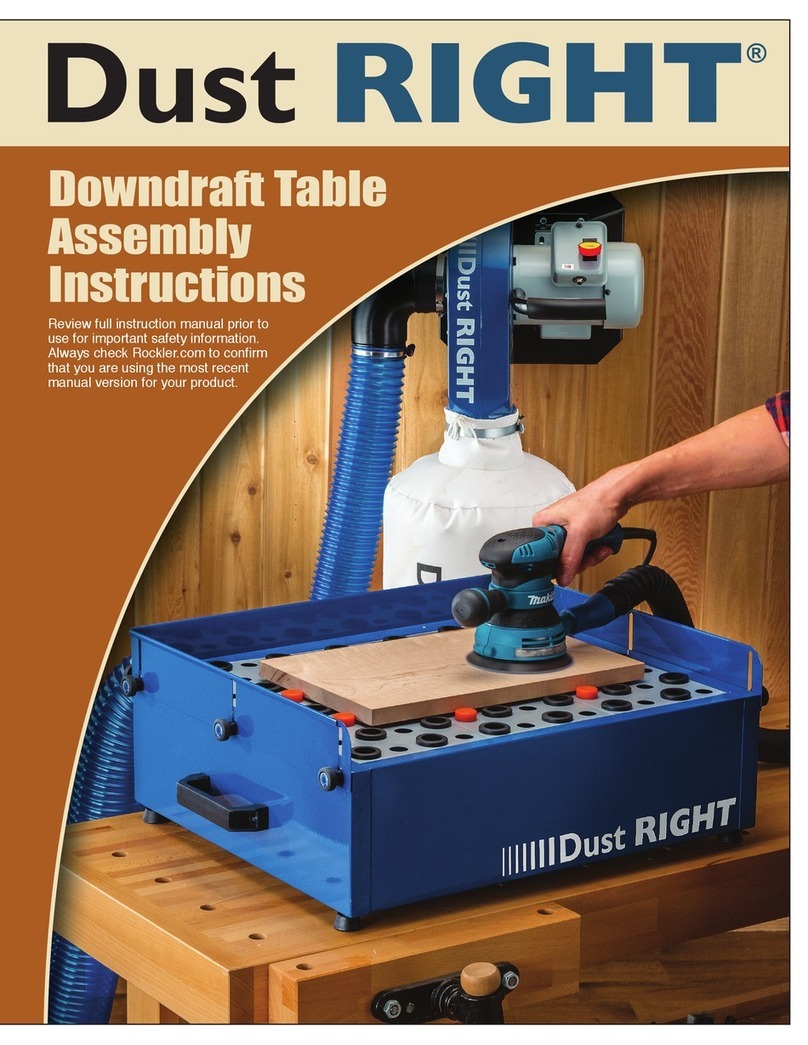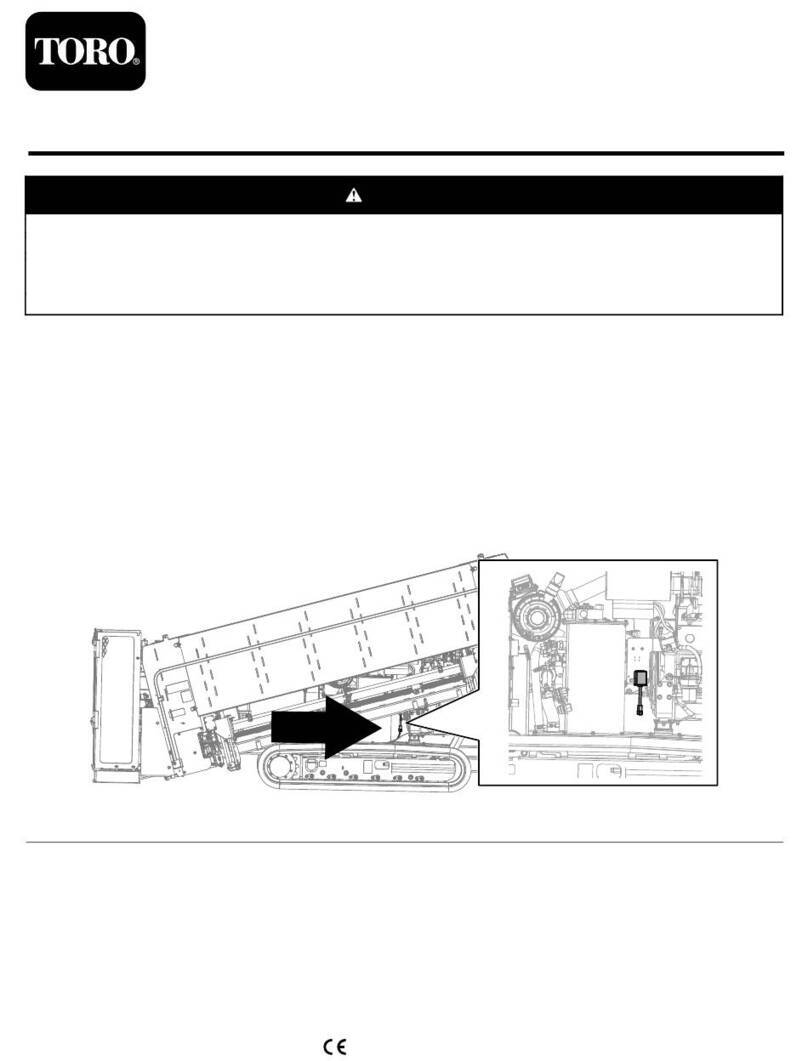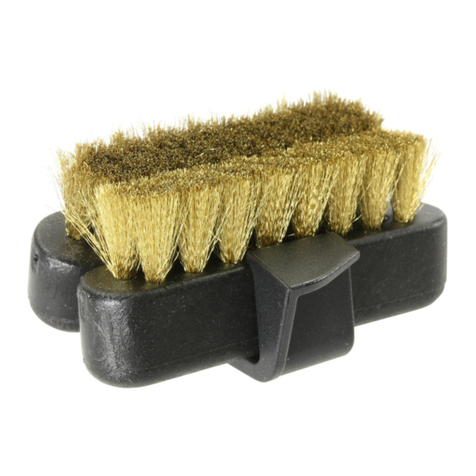Spare parts
Use of unauthorized spare parts
Using unauthorized spare parts can endanger personnel and
damage the product or cause it to malfunction.
•Use only original spare parts or spares authorized by SCHUNK.
Chuck jaws
Requirements of the chuck jaws
Stored energy can make the product unsafe and risk the danger of
serious injuries and considerable material damage.
•Only replace chuck jaws if no residual energy can be released.
•Do not use welded jaws.
•The chuck jaws should be designed to be as light and as low as
possible. The clamping point must be as close as possible to the
chuck face (clamping points at a greater distance lead to
greater surface pressure in the jaw guidance and can
significantly reduce the clamping force).
•Screw the jaw mounting bolts into the bore holes furthest
apart.
•After a collision, the lathe chuck and the chuck jaws must be
subjected to a crack test before being used again. Damaged
parts must be replaced with original SCHUNK spare parts.
•Replace the chuck jaw mounting bolts if there are signs of wear
or damage. Only use bolts with a quality of 12.9.
Environmental and operating conditions
Required ambient conditions and operating conditions
Incorrect ambient and operating conditions can make the product
unsafe, leading to the risk of serious injuries, considerable material
damage and/or a significant reduction to the product's life span.
•Make sure that the product is used only in the context of its
defined application parameters, (3, Page 16).
•Make sure that the product is a sufficient size for the
application.
•Only use high-quality cooling emulsions with anti-corrosive
additives during processing.
•Lubricating intervals must be adhered to (7.3, Page 21).
